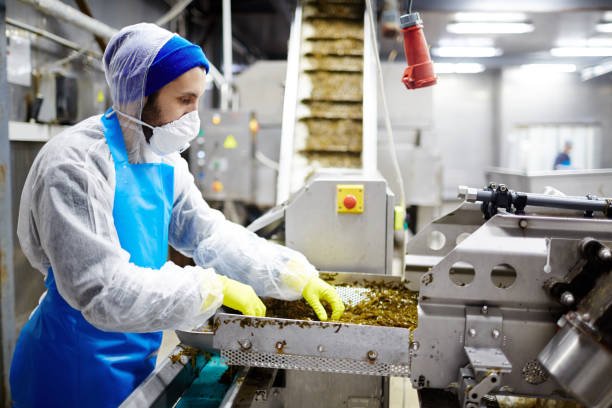Food processing is a crucial industry that ensures the safety of the food supply chain. The industry has a significant responsibility in delivering products that are safe for human consumption. The use of personal protective equipment (PPE) is essential for the health and safety of workers in food processing plants. PPE helps to minimize exposure to hazards that can cause both acute and chronic health problems. In this article, we will explore the importance of PPE in food manufacturing companies and guide you in PPE selection.
Why is PPE important in food manufacturing?
The food manufacturing industry involves a wide range of processes, including handling of raw materials, mixing, processing, and packaging. Workers in this industry are exposed to various potential hazards such as chemicals, physical hazards, and biological agents. PPE is a crucial tool for protecting workers from these hazards and reducing their risks of accidents, injuries, and illnesses.
PPE refers to gear such as gloves, safety glasses, respirators, hearing protection, and aprons that are designed to protect workers from specific hazards. Workers must use the appropriate PPE when carrying out their duties to minimize the risk of injury or illness. By providing workers with PPE, food manufacturers can ensure that their workers stay safe, healthy, and productive.
Choosing the Right Food Processing PPE
Food manufacturing facilities must select PPE that is appropriate for the job. The process of selecting PPE involves several important factors, including the types of hazards that workers may be exposed to, the tasks that they perform, and the regulatory requirements.
Hazards
The first step in selecting PPE is to identify the hazards that are present in the workplace. This could include biological hazards such as bacteria and viruses, physical hazards such as noise and vibrations, and chemical hazards such as cleaning agents and disinfectants. Different types of PPE are designed to protect workers from different types of hazards. For example, selecting gloves that offer chemical protection is appropriate for handling chemicals, while selecting gloves that offer cut resistance is necessary when handling sharp equipment.
Tasks
The type of PPE that is needed for employees often depends on their role in the manufacturing process. Workers who work with food should wear gloves to prevent contamination, while those who work with heavy machinery should wear hard hats to protect against head injuries. Tasks such as cutting, slicing, or grinding meat require workers to wear specific protective equipment like chain mail gloves or earmuffs.
Regulation
Several regulations govern the use of PPE in the food processing industry. Compliance with these regulations is mandatory to ensure the safety of workers. For example, OSHA (Occupational Safety and Health Administration) has specified the types of PPE required for workers in various industries. USDA (United States Department of Agriculture) also offers guidelines for PPE selection and use in the food processing industry.
Examples of PPE in Food Manufacturing
The following are some examples of PPE that are commonly used in the food processing industry:
Gloves: Gloves are used to protect hands from contamination, cuts, and chemical exposure. Gloves come in different designs, materials, and thicknesses.
Aprons: They are used to protect the clothing of workers from splashes and spills of liquids.
Safety glasses: They are used to protect the eyes from impact, dust, and splashes of chemicals.
Hairnets and beard covers: These are designed to keep hair and facial hair from getting into food products.
Respirators: They are used to protect workers from inhaling harmful particles during tasks such as mixing or packaging of food products.

PPE is a vital tool to protect food-processing workers from hazards in the workplace. The appropriate PPE selection not only helps to keep workers safe but also ensures compliance with the regulatory requirements. Different PPE options are available for different hazards, tasks, and regulations. Therefore, food manufacturing facilities must ensure they select the right PPE for their workers to reduce the risk of injury or illness and provide a safe working environment.


